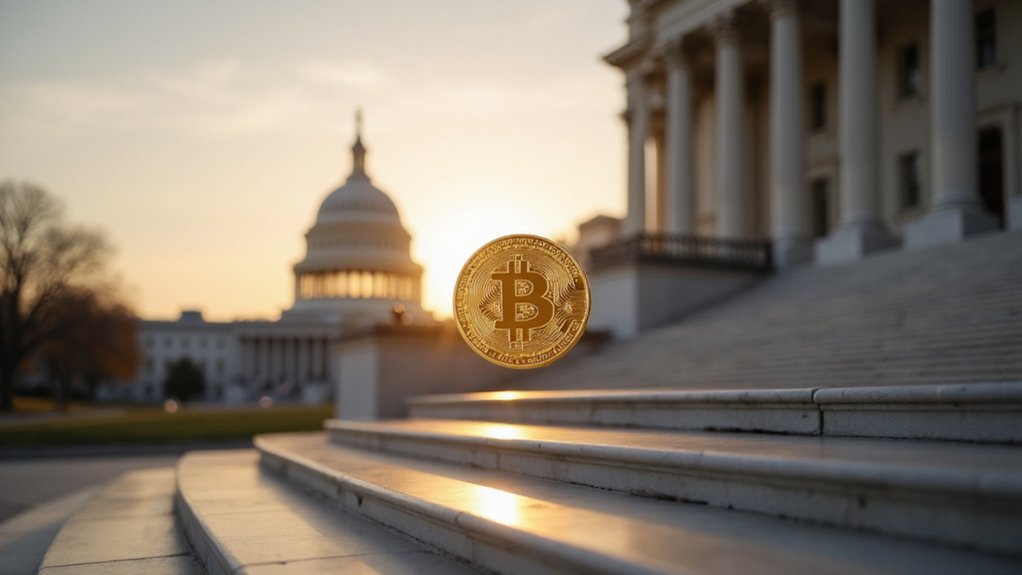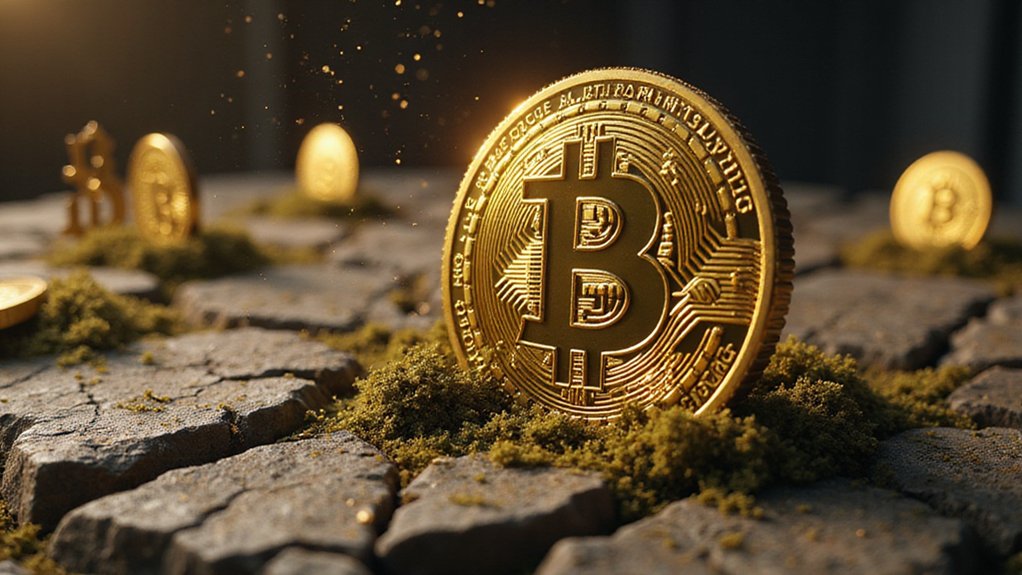DePIN crypto networks represent a radical shift from centralized to community-driven infrastructure, creating newfound financial opportunities for average participants. These blockchain-powered ecosystems democratize ownership through tokenized rewards for contributing resources like bandwidth, storage, or energy. Unlike traditional systems where profits flow upward, DePINs distribute benefits equitably among stakeholders while enhancing transparency and efficiency. The Helium Network, with its 88,000+ global hotspots, exemplifies how these self-sustaining models are transforming critical sectors—the infrastructure revolution is just warming up.

While traditional infrastructure systems have long been the dominion of centralized authorities and corporate behemoths, a radical paradigm shift is underway through the emergence of Decentralized Physical Infrastructure Networks (DePIN).
These blockchain-powered ecosystems are methodically dismantling the conventional frameworks that have governed our critical resources, replacing them with community-driven alternatives that democratize ownership and access.
The sophisticated interplay of blockchain technology, tokenization mechanisms, and decentralized governance models enables these networks to operate with unprecedented transparency and efficiency—qualities notoriously absent in legacy systems.
Blockchain-powered architectures transcend conventional limitations, delivering crystalline transparency where traditional infrastructure remains shrouded in bureaucratic opacity.
DePINs manifest in two primary variants: Physical Resource Networks (PRNs) and Digital Resource Networks (DRNs), each addressing distinct infrastructural needs.
PRNs, characterized by their non-fungible nature, facilitate location-based services spanning connectivity, mobility, and energy sectors.
DRNs, conversely, deal in fungible digital commodities such as computing power and data storage—resources that have historically been concentrated in the hands of tech oligopolies.
The brilliance of the DePIN architecture lies in its elegant incentive structure.
Participants who contribute resources—be it bandwidth, storage capacity, or renewable energy—receive tokenized rewards, creating a self-sustaining ecosystem where value flows directly between providers and users.
(One might reasonably ask: when was the last time your internet service provider shared profits for your loyalty?)
These tokens often confer governance rights, ensuring that network evolution reflects community priorities rather than shareholder demands.
Blockchain technology serves as the administrative backbone of these networks, enabling permissionless participation while maintaining meticulous record-keeping.
Smart contracts—those tireless algorithmic arbiters—automate governance processes and resource distribution with machine-like precision, eliminating the need for inefficient bureaucratic intermediaries.
This technology foundation significantly reduces single points of failure through its distributed network structure, making the entire system more resilient against outages and attacks.
Similar to RWA tokenization, DePIN projects convert physical infrastructure into digital assets that can be fractionally owned and traded on blockchain marketplaces.
Notable projects like Helium Network have demonstrated the viability of this model, growing to over 88,000 hotspots globally and providing a scalable alternative to traditional telecom infrastructure.
The implications for infrastructure development are profound.
By reducing dependence on centralized entities, DePINs facilitate community-driven projects that optimize resource allocation through market-based mechanisms rather than top-down directives.
This approach not only enhances efficiency but fosters a more equitable distribution of the financial benefits derived from infrastructure—potentially enabling economic opportunities previously inaccessible to average participants in the digital economy.
Frequently Asked Questions
How Risky Are Depin Investments Compared to Traditional Cryptocurrencies?
DePIN investments occupy a distinctly higher position on the risk curve than traditional cryptocurrencies.
While both share speculative characteristics, DePIN projects introduce additional layers of complexity through their integration with physical infrastructure, creating unique challenges in tokenomics, regulatory compliance, and technical execution.
Their nascent status compounds these concerns, though this elevated risk profile comes paired with potentially greater asymmetric returns—the financial world’s perennial trade-off between innovation and stability remains firmly intact.
What Regulatory Challenges Do Depin Networks Currently Face?
DePIN networks face a regulatory quagmire on multiple fronts.
Token classification uncertainty leaves projects in limbo—are they securities or utilities?—while privacy concerns abound given their data-harvesting nature.
Cross-jurisdictional deployment creates a compliance nightmare across disparate legal regimes.
Meanwhile, governance transparency and fair compensation mechanisms remain woefully underregulated.
Projects consequently divert precious resources to legal navigation rather than innovation, stifling the sector’s growth potential while regulators struggle to catch up with this technological paradigm shift.
Can Depin Tokens Be Staked for Passive Income?
While DePIN tokens aren’t primarily designed for staking, some projects have implemented staking mechanisms for passive income generation.
Unlike traditional proof-of-stake cryptocurrencies, DePIN tokens typically prioritize incentivizing infrastructure contributions rather than transaction validation.
Projects may develop custom staking models aligned with their specific tokenomics and governance structures.
Token holders might earn passive returns through governance participation, liquidity provision, or project-specific staking pools—though these implementations vary considerably across the DePIN ecosystem, with no standardized approach currently dominating the sector.
How Do Depin Networks Handle Security Breaches?
¹This relationship between security and staking illustrates why many DePIN tokens offer passive income opportunities through stake-based participation.
Are There Tax Implications Specific to Depin Token Earnings?
DePIN token earnings face the same tax scrutiny as other crypto assets—albeit with nuanced complications.
Rewards from contributing resources to physical infrastructure networks likely constitute ordinary income when received (valued at market price), while subsequent appreciation triggers capital gains tax upon disposal.
The IRS’s notorious reluctance to issue crypto-specific guidance leaves DePIN participants steering through murky waters; node operators particularly face questions about whether equipment depreciation might offset earnings—a calculation prudent participants won’t leave to chance.









